Architecture styles have evolved over centuries, shaped by cultural influences, technological innovations, and philosophical movements. From ancient Greek and Roman classical orders to Gothic cathedrals to 20th-century modernism, buildings reflect their historical and geographical context. Classical Greek architecture established key architectural elements like columns, entablatures, and symmetrical facades. Distinct orders emerged – Doric, Ionic, and Corinthian – each with their own proportions and detailing. Roman architecture adapted Greek principles on an immense civic scale, with innovations like arches, vaults, and domes. In the Middle Ages, Romanesque architecture featured rounded arches, barrel vaults, and powerful masonry forms. Gothic architecture arose in 12th century France with soaring vaults, pointed arches, and extensive use of glass, exemplified by grand cathedrals like Chartres and Notre Dame. Renaissance architecture in 15th-century Italy consciously revived classical Greek and Roman elements. Mathematical proportions, columns, domes, and symmetry imbued buildings with a sense of harmony and rational humanism. Baroque architecture emerged in 17th-century Rome, with dramatic shapes, rich ornamentation, and contrasting elements that created illusory effects in churches and palaces. Rococo architecture continued Baroque exuberance in an intimate, decorative style. Neoclassical architecture arose in mid-18th century Europe, recalling Greek and Roman forms like columns, pediments, and domes. The clean lines and restrained ornament suited Enlightenment ideals. In the 19th century, Romantic styles like Gothic Revival and exotic revivals evoked emotion and nostalgia. Technological innovations enabled new structural possibilities, as seen in the Crystal Palace’s modular iron and glass construction. Early 20th-century modernist architecture rejected ornament and historical reference. Bauhaus’s principles of function over form and truth to materials dominated. The sleek, unornamented International Style emerged. Art Deco, Expressionism, Futurism, and Constructivism explored machine-age themes and new materials. Mid-century modernism adapted modernist ideas to suburban homes and public buildings. Brutalism and Metabolism also proliferated. Postmodernism from the 1970s reacted against strict modernist forms, reintroducing symbolism, references, and ornament. Contemporary architecture is often characterized by unusual shapes enabled by computer-aided design. Sustainable architecture and adaptive reuse are also major trends. Styles continue to evolve, but enduring principles of form, function, and beauty in architecture remain. Throughout history, materials availability, engineering capabilities, and cultural zeitgeist have shaped architectural styles. Ancient Greek and Roman architectures established classical ideals of harmony, proportion, and order. Gothic architecture exemplified new verticality and lightness. The Renaissance revived Greco-Roman principles. Baroque architecture manipulated forms and light for emotional effect. The Industrial Revolution enabled new structural possibilities like the Crystal Palace. Modernism stripped architecture down to functional essentials. Postmodernism reasserted symbolic meaning. Today digital design expands formal vocabularies while sustainable architecture addresses environmental needs. Across eras, the interplay between form and function continues to guide architectural creativity.
1. Brutalist architecture
Brutalist architecture emerged in the 1950s as a reaction against the nostalgia and ornamentation of 1940s architecture. The term “Brutalism” comes from the French phrase “béton brut” meaning raw concrete, referring to the extensive use of unfinished, exposed concrete in Brutalist buildings. Brutalist buildings are characterized by their massive, blocky forms and lack of decoration. The style descended from modernism but rejected its machine aesthetic in favor of raw, unfinished materials like concrete, brick, and glass. Brutalist buildings often have a monumental, imposing appearance and make visible the buildings’ functions through their modular, geometric forms.
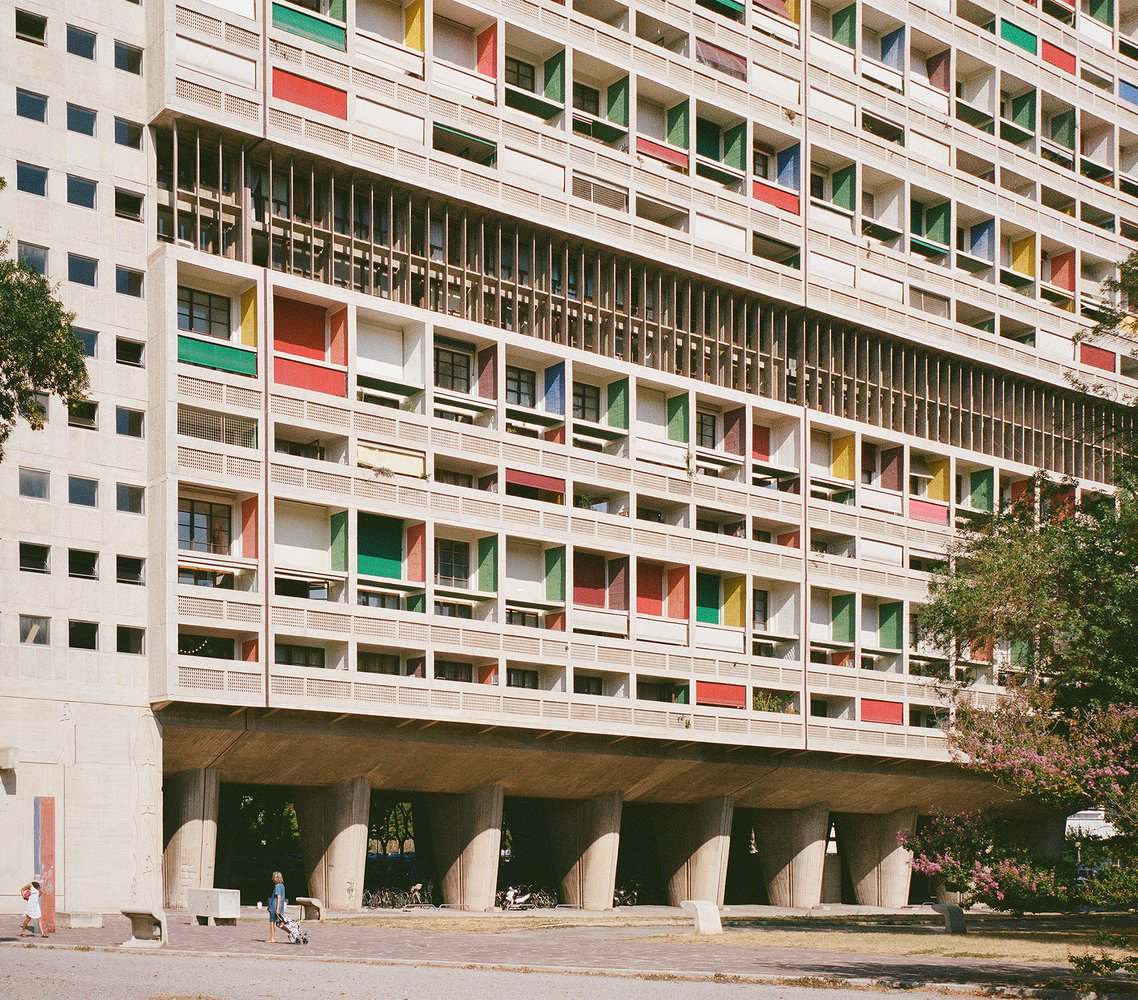
Brutalist buildings were influenced by modern art movements like cubism, futurism, and constructivism that also used unfinished materials and celebrated functionality over decorative flourishes. Key influences also included Le Corbusier’s use of béton brut, or raw concrete, and the ideas of Alison and Peter Smithson who viewed Brutalism as an “ethic, not an aesthetic” focused on humane goals and social ideals. Brutalism became popular for government, institutional, and residential buildings from the 1950s-1970s because concrete was an inexpensive material that allowed quick construction. Common criticisms of the style are that it can appear cold, imposing, and inhuman. The rough unfinished look of the concrete has also weathered poorly on some buildings, creating a worn appearance. However, in recent years, Brutalism has seen a resurgence of interest for its bold, sculptural forms and its embrace of rawness and functionality.
Key examples of iconic Brutalist buildings include Le Corbusier’s Unité d’Habitation in Marseille, France; the Barbican Estate in London; Boston City Hall by Kallmann McKinnell & Knowles; the Yale Art and Architecture Building by Paul Rudolph; and the Geisel Library at UC San Diego by William Pereira. Though divisive, Brutalism made a major impact on architectural style in the postwar period and its influence is still felt in contemporary architecture’s embrace of rawness, functionality, and exposed materials.
2. Gothic architecture
Gothic architecture emerged in 12th-century France, evolving from Romanesque architecture. It is characterized by pointed arches, ribbed vaults, flying buttresses, tall spires, and an emphasis on light and verticality. The style allowed the construction of soaring yet delicate stone cathedrals with expansive stained glass windows.
Gothic architecture was influenced by theological ideas about light as a symbol, as well as by advances in engineering that allowed taller, thinner walls reinforced by external buttressing. Key engineering developments included the pointed arch, ribbed vault, and flying buttress. The pointed arch distributed structural forces more efficiently than the rounded Romanesque arch, allowing walls and vaults to be thinner. The ribbed vault directed thrust forces to piers or columns. Flying buttresses transferred the outward thrust from a building’s upper levels directly to the ground, further thinning walls.
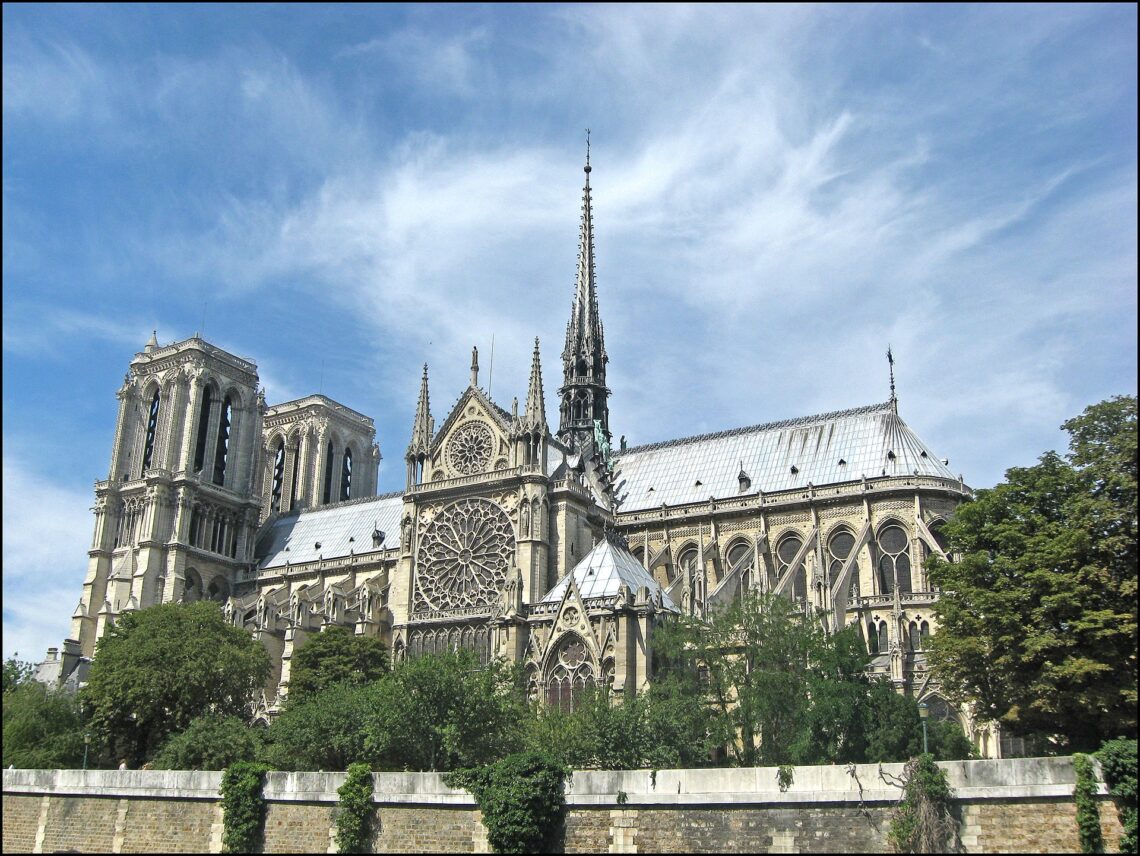
Common materials in Gothic buildings were stone, brick, wood, and glass. Stone and brick composed the main structure. Wood was used extensively for scaffolding during construction as well as for roofs, floors, and decorative elements. Stained glass windows with stone tracery were a defining feature, allowing colored light to fill interiors. While considered innovative in medieval times, Gothic architecture was criticized during the Renaissance and after as overly ornate. However, Gothic Revival movements in the 18th and 20th centuries led to new appreciation. Contemporary criticisms focus on poor weathering of some materials like concrete or metal.
Key examples of Gothic architecture include Chartres Cathedral, Notre Dame Cathedral, Cologne Cathedral, and Milan Cathedral. The style spread beyond France to Britain, Spain, Germany, Italy and beyond. Gothic principles continued to influence architecture into the 16th century and inspired later revival movements. Its lasting impact derives from the towering verticality and lightness of form achieved through structural innovation.
3. Neoclassical architecture
Neoclassical architecture emerged in the mid-18th century as a reaction against the excessive ornamentation of Baroque and Rococo styles. It looked back to the classical architecture of ancient Greece and Rome for inspiration. Neoclassical buildings are characterized by their grand scale, geometric forms, symmetrical facades, and columns inspired by the classical orders – Doric, Ionic, and Corinthian. Ornamental details like pediments, entablatures, and decorative relief carvings also reference classical Greek and Roman architecture.
The neoclassical movement was influenced by archaeological discoveries in Pompeii and Herculaneum in the mid-18th century, which created great interest in classical art and architecture. Architectural theorists like Laugier also published works defining classical architecture in rational terms, as opposed to decorative. Neoclassicism became associated with democratic ideals, being used for civic buildings in Europe and the United States after the American and French revolutions.
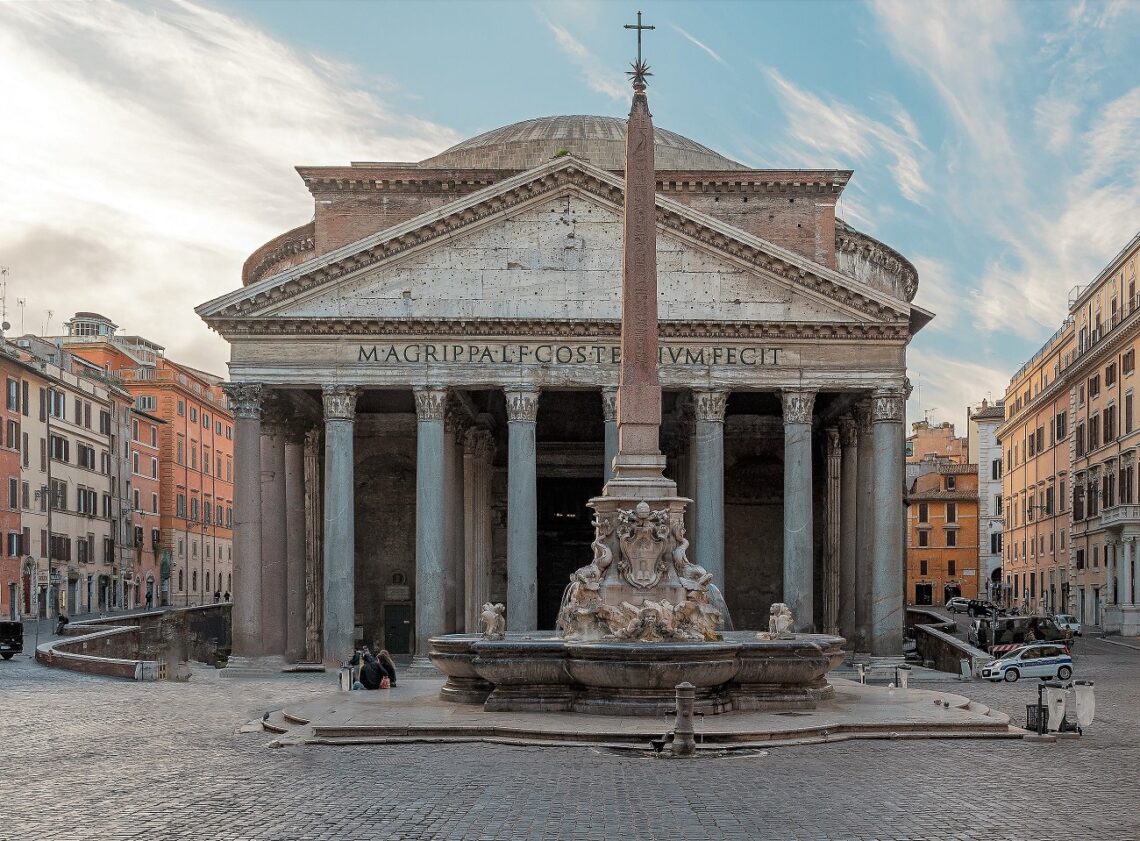
Common materials in neoclassical buildings were stone, marble, brick, and wood. Stone and marble were used for columns, pediments, relief carving, and other decorative elements. Brick-composed walls, with wood used for interior details. Neoclassical buildings were often painted white to mimic the appearance of marble. Criticisms of the style focus on its association with political elites and institutions. Some find neoclassical buildings cold and austere due to their formal, symmetrical nature. However, neoclassicism continues to influence civic architecture seeking to evoke democratic ideals.
Key examples include the Panthéon in Paris, the White House and U.S. Capitol Building in Washington D.C., the British Museum in London, and La Moneda Palace in Santiago, Chile. Influential architects were Robert Adam in Britain, Thomas Jefferson in America, and Sir John Soane. Neoclassicism declined by the late 19th century with the rise of other revival styles and modernism but continues to inspire some civic building designs today.
4. Bauhaus architecture
The Bauhaus was an influential art and design school operational in Germany from 1919 to 1933. It was founded by architect Walter Gropius with the goal of unifying art, craft, and technology. Bauhaus buildings are defined by their minimalist, functionalist aesthetic using modern materials like glass, steel, and concrete. The school was influenced by modern art movements like Cubism and De Stijl, as well as by the English Arts and Crafts movement. Bauhaus architects embraced glass curtain walls, flat roofs, smooth exteriors, and modular, geometric forms stripped of ornamentation.
Common materials were concrete, glass, and steel, chosen for their durability, affordability, and potential for industrial production. Critics argued the buildings were cold and monotonous, but the style highly influenced 20th-century modernist architecture. Key Bauhaus design principles included truth to materials, form following function, and integrating art into everyday life through design. Current trends drawing on Bauhaus principles include sustainable and modular architecture.
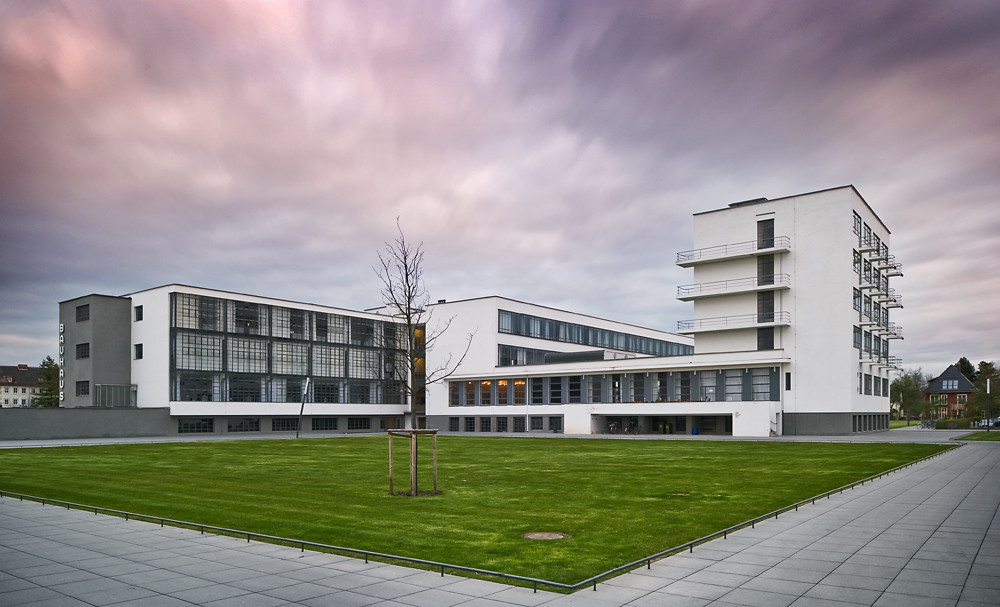
Iconic examples include the Bauhaus school building in Dessau by Walter Gropius, the UNESCO World Heritage site of the White City of Tel Aviv with over 4,000 Bauhaus buildings, and the Breuer’s Whitney Museum in New York. Other famous Bauhaus architects were László Moholy-Nagy, Marcel Breuer, and Ludwig Mies van der Rohe.
Gropius is considered the most representative of Bauhaus architecture with his pioneering school building and his contributions to spreading Bauhaus ideas through teaching in the U.S. The Bauhaus promoted the idea that good design could shape society and humanize technology and industry. Its legacy continues to influence functional, unornamented, and mass-producible design across fields.
5. Baroque architecture
Baroque architecture emerged in the late 16th century in Italy as a more ornate, theatrical, and dynamic successor to Renaissance architecture. It was characterized by complex curved forms, gilded statuary, vividly painted ceilings, and an overall sense of movement and drama. The name “Baroque” derives from the Portuguese word for an irregular pearl, reflecting the style’s embrace of asymmetry and elaborate ornamentation.
The Counter-Reformation influenced the development of Baroque architecture in the Catholic Church. In response to the Protestant Reformation, the Catholic Church used Baroque art and architecture to reassert its power by appealing to worshipers’ emotions. Churches were designed to dazzle visitors and inspire awe through their scale, lighting, decoration, and illusory effects like trompe l’oeil paintings. This new architecture was meant to convey the Church’s continued strength and relevance.
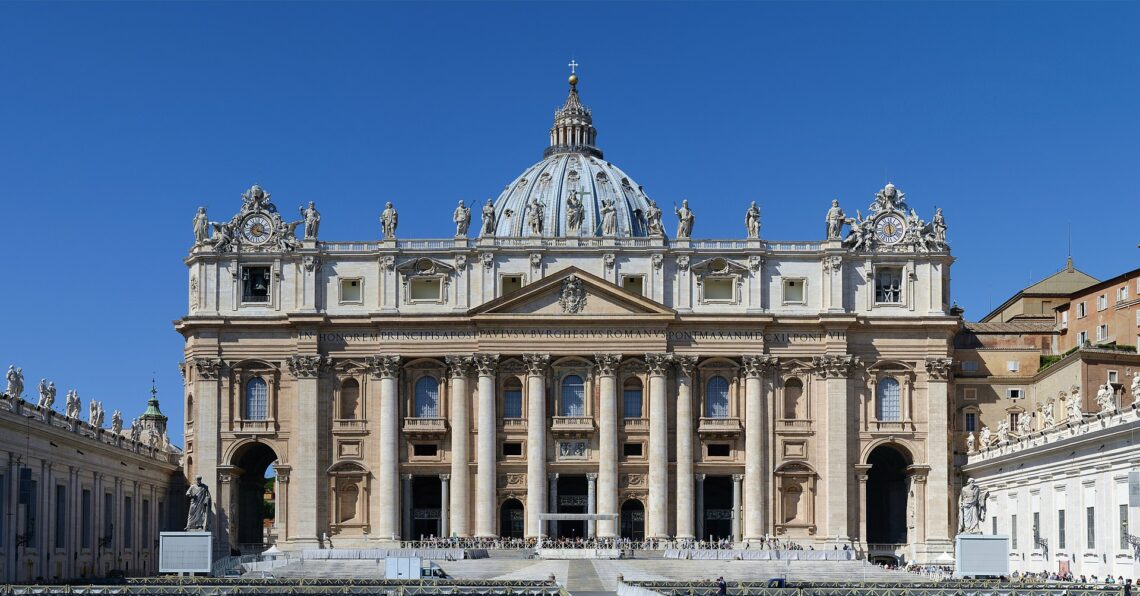
Baroque buildings extensively used materials like marble, gilded wood, and stucco for ornamentation. Domes, columns, curved walls, and ceilings with painted frescoes were all typical features. Exterior facades were often asymmetrical and featured undulating shapes. Inside, ceilings were painted with frescoes opening up to illusionistic skies. The style spread from Italy to France, Spain, Portugal, Germany, Austria, and Russia, taking on regional variations.
In France, Baroque combined classical French elements for a more orderly, less excessive version than the Italian. Spanish Baroque was noted for extremely ornate Churrigueresque decoration. Important architects included Bernini, Borromini, and Guarini in Italy, Fischer von Erlach and Neumann in Austria and Germany, Wren in England, and Le Vau, Mansart, and Hardouin-Mansart in France.
Baroque architecture was a major influence on building design in the 17th and early 18th centuries. Its legacy can be seen in the use of movement, contrast, ornament, and dramatic effects to create engaging, emotionally expressive architecture.
6. Romanesque architecture
Romanesque architecture emerged in Western Europe in the 11th century, developing from Roman and Byzantine influences. It is characterized by semi-circular arches, barrel vaults, thick walls, and powerful piers. The style was influenced by increasing pilgrimages to shrines and churches housing relics, requiring larger structures, along with the rise of monasticism needing expanded spaces. The development of ribbed and pointed vaulting allowed for higher and lighter stone ceilings.
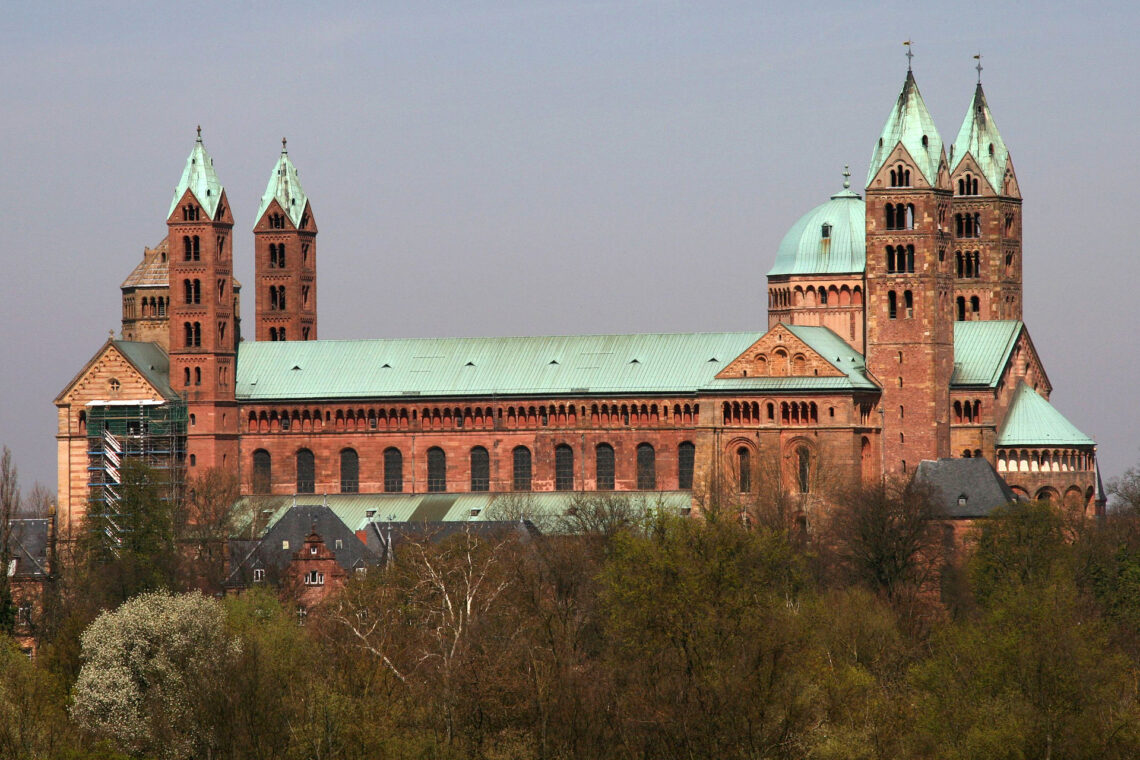
Common materials were stone, brick, and wood. Stone walls and piers supported heavy stone vaulting. Exteriors featured decorative arcades, rounded arches over windows and portals, and carved ornamentation on capitals and tympanums. Interiors were brought to life with painted walls and ceilings. Romanesque criticism focuses on its relatively small windows and sense of heaviness compared to later Gothic architecture. However, Romanesque achieved new heights and scales using the materials and engineering skills of the era. Its principles of logic, clarity, and order influenced many later styles.
Key design elements were the round arch, barrel vault, pier and capital, arcade, and tympanum carved with religious scenes. Current trends evoking Romanesque include masonry construction and rounded arches. Iconic Romanesque buildings include the Abbey Church of Saint-Philibert, Tournus Cathedral, Speyer Cathedral, the Pisa Cathedral complex, and Durham Cathedral. Influential architects include William of Volpiano, Hildebrand, and William of Sens. Romanesque originated in France at abbey churches like Cluny, and regional styles emerged. Distinctive Spanish Romanesque used Moorish, or Mudéjar, elements. Norman Romanesque blended Romanesque with Norse influences in England and Italy. The Romanesque style created a sense of grandeur and timelessness through its proportions and weighty presence.
7. Art Deco architecture
Art Deco architecture is a style of architecture that emerged in the 1920s and 1930s as a reaction against the lavishness of Art Nouveau and the austerity of the Bauhaus. It combines modernist forms and materials with visually distinctive geometric shapes, zigzag and chevron patterns, and bold colors. The style is associated with the 1920s and 1930s when it was popular for office buildings, movie theaters, hotels, and transportation hubs. The characteristics of Art Deco architecture include geometric shapes, chevrons, zigzags, and stylized floral and sunburst motifs. Buildings have a vertical emphasis, with tall towers, spires, and staircase shapes.
Art Deco architecture was influenced by several early 20th-century styles and movements. It emerged from the Exposition Internationale des Arts Décoratifs et Industriels Modernes in Paris in 1925, which showcased luxury goods and modern design. Architects choose materials that could be formed into geometric shapes, like concrete, glass blocks, aluminum, chrome, and stainless steel. These materials expressed modernity and the machine-age aesthetic. Terracotta cladding offered rich colors and patterns.
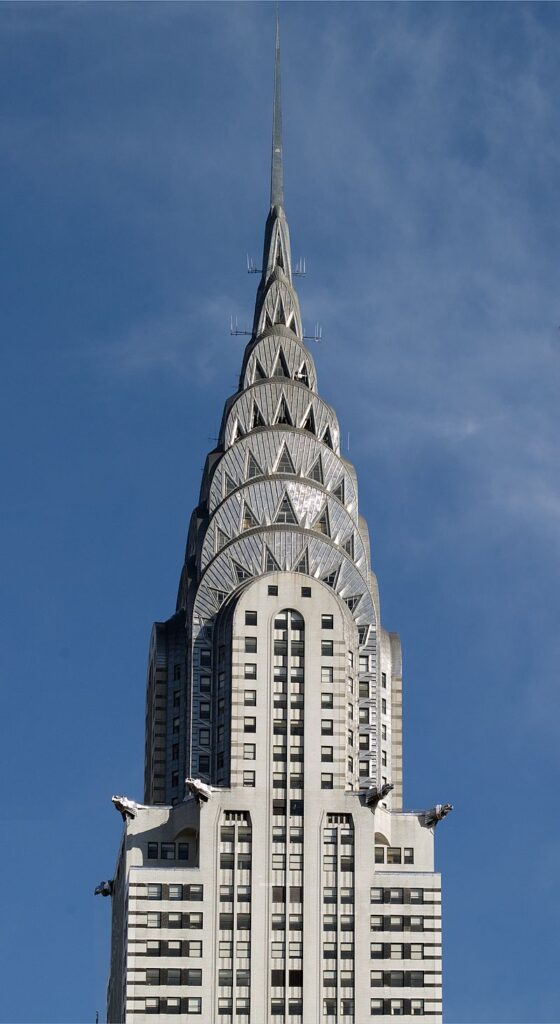
Some critics argued that Art Deco architecture was overly decorative compared to the functionalist Bauhaus style. Its ornamentation seemed wasteful in the aftermath of World War I. The ziggurat outlines of buildings like the Chrysler Building were seen as garish or kitschy by some modernist architects. While Art Deco buildings were often clad in expensive, luxurious materials, cheaper mass-produced public housing lacked architectural distinction.
Architects today can incorporate Art Deco’s defining verticality, sleek geometric forms, and lavish ornamentation on a smaller scale. Its aesthetics work for high-rise residential towers, boutique hotels, restaurants, and commercial spaces looking for a touch of vintage flair. Art Deco color palettes and motifs can be adapted for postmodern building facades. Iconic examples include the Chrysler Building in New York, the Empire State Building in New York, 30 Rockefeller Plaza in New York, the Eastern Columbia Building in Los Angeles, the Marine Building in Vancouver, Palais de la Porte Dorée in Paris, Hotel Nacional de Cuba in Havana, National Diet Building in Tokyo, Mossehaus in Berlin, Guardian Building in Detroit, William Lescaze House in Philadelphia, Villa Cavrois in France, and the buildings of South Beach in Miami.
Some of the most representative Art Deco architects and designers include Raymond Hood, William Van Alen, Ely Jacques Kahn, Ralph Walker, Erich Mendelsohn, Rudolph Schindler, Earl Reed, Emery Roth, Joseph Urban, Timothy Pflueger, Arne Jacobsen, and Donald Deskey. These architects pioneered Art Deco skyscrapers, movie palaces, apartments, residences, civic structures, and sleek, modern interiors incorporating custom furniture and lighting.
8. Victorian architecture
Victorian architecture refers to the various architectural styles that emerged during the reign of Queen Victoria in Britain from 1837 to 1901. It was an era of rapid industrialization and innovation in building materials and methods, which allowed for greater experimentation in architectural styles. Some key characteristics that define Victorian architecture include the use of a variety of historical revival styles, often mixed together eclectically. Gothic Revival, Italianate, Second Empire, Queen Anne, and other styles were popular. Buildings from the period often have steeply pitched roofs, towers, turrets, bay windows, and ornamental trim like gingerbread woodwork. Grand ornamental staircases, detailed fireplaces, and elaborate interiors with wallpapers, wood paneling, and parquet floors were also typical.
The development of Victorian architecture was heavily influenced by new mass production techniques and materials developed during Britain’s industrial revolution. The railway enabled quick transport of building materials like Welsh slate, machine-made bricks, and plate glass across the country. The use of iron framing also allowed larger spans for windows and interior spaces. Together these developments enabled rapid construction to meet the demand for new housing and civic buildings. Common materials used in Victorian buildings included brick, local stone, slate, cast iron, steel, and wood. Brick was used for exterior walls, while stone, iron, and wood were used for decorative elements like cornices, columns, railings, and elaborate porches. Stained and etched glass, wallpapers, and parquet wood floors were popular inside. Ornate woodwork trimmed interiors. These machine-made materials were less expensive than traditional handcrafted ones and allowed elaborate decoration at various price points.
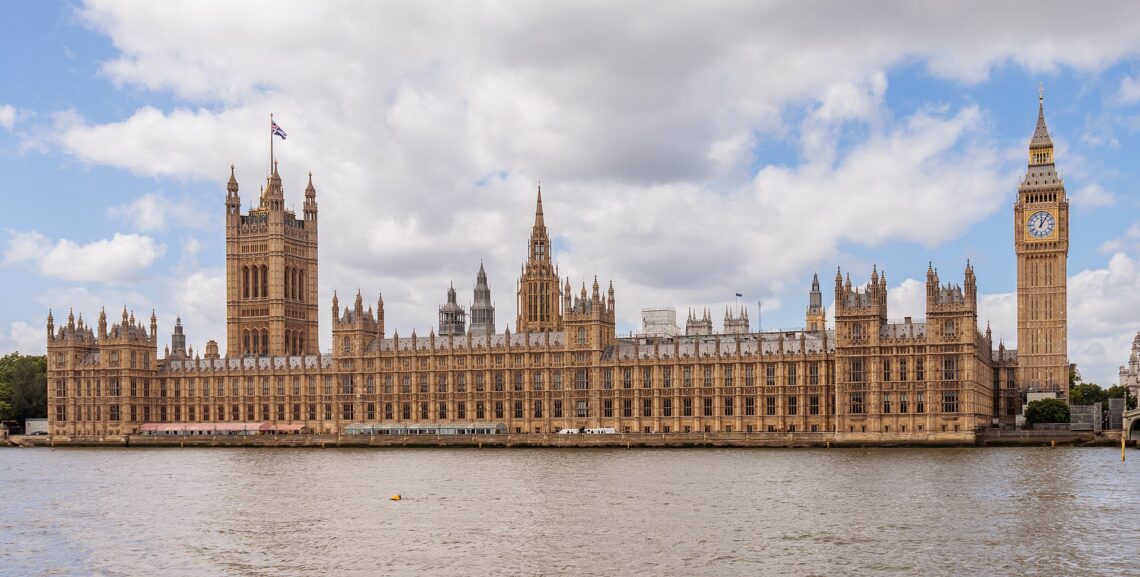
Criticisms of Victorian architecture focus on its over-ornamentation and eclecticism. Detractors consider it fussy and overdone. However, the variety of revival styles and new materials gave Victorian architecture great character. It remains a defining architectural period. Key design principles that architects employed included creating visual drama and complexity using historical styles mixed together. They integrated pattern, color, texture, and materials to create ornate, detailed exteriors and interiors. Designers drew on medieval, Renaissance, and Baroque influences to craft unique buildings.
Contemporary trends that draw from Victorian architecture include incorporating steep gables, bay windows, porches, and ornate wood trim work on new buildings to achieve a traditional look. Stained glass, parquet floors, and period wallpapers and lighting are used to embellish interiors with Victorian flair. Famous examples include the Natural History Museum in London, the British Houses of Parliament, the Royal Albert Hall, the elaborate hotels of seaside towns, ornate railway stations like London’s St Pancras and Paddington stations, and the lavishly decorated country houses of the wealthy. The “painted ladies” row houses in San Francisco also exemplify Victorian exuberance. Influential architects included George Gilbert Scott, Augustus Pugin, William Butterfield, and Joseph Paxton.
9. Renaissance architecture
Renaissance architecture emerged in 15th-century Florence as a revival of classical Roman forms, including arches, columns, and domes. Defining features include symmetry, mathematical proportions, ratios, the use of classical orders, and harmonious geometrical forms. The style aims to achieve a balance between buildings and human proportions. The rediscovery of Vitruvius’ writings on architecture influenced architects like Brunelleschi, who studied ancient ruins in Rome. Wealthy patrons sponsored major building projects, spreading the style.
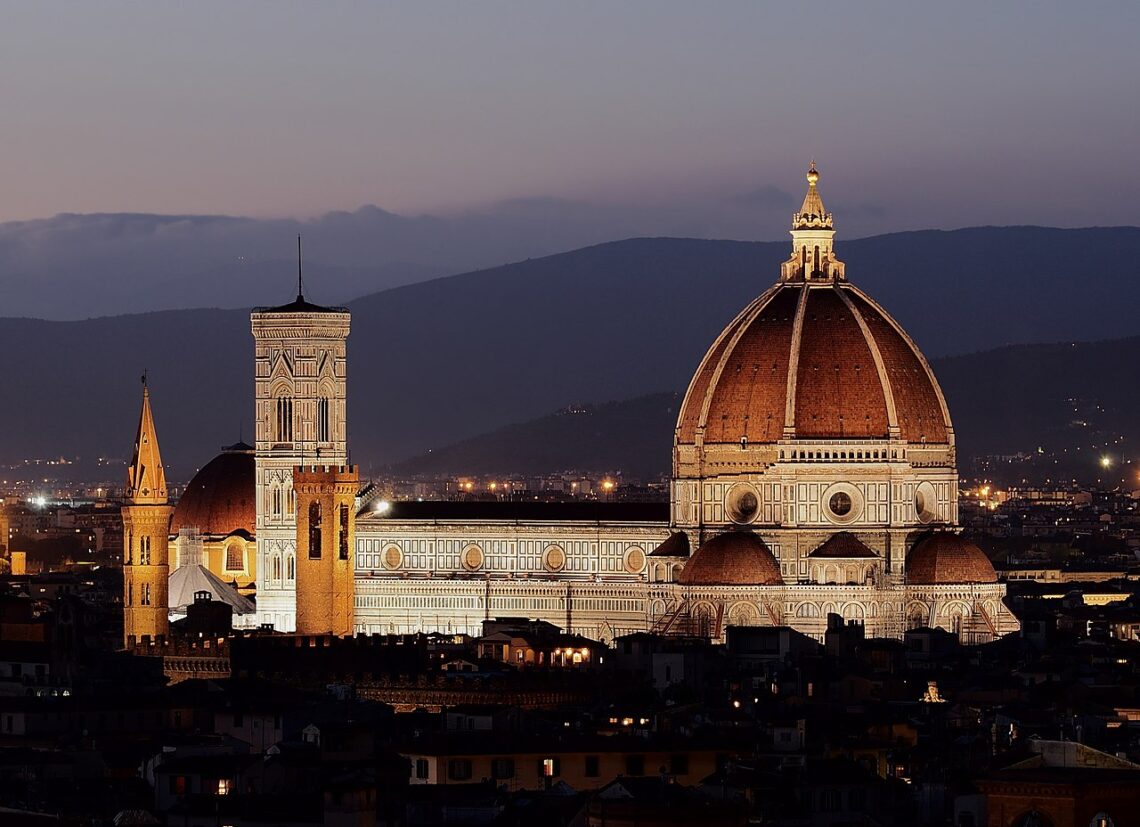
Renaissance buildings used stone, brick, and wood. Ashlar masonry created rusticated surfaces. Brick lent itself to intricate patterns. Wood-framed interiors, often with coffered ceilings. The choice of materials focused on symmetry, proportions, and expressing geometrical forms rather than overt decoration. Some criticisms arise. Structures could be austere or coldly intellectual. The focus on plans and facades sometimes made buildings seem flat. Renaissance design principles for architects include the use of geometry, symmetry, mathematical proportions and ratios, and classical orders. Facades should have a clear system of vertical and horizontal articulation. Plans often have a central organization. The style seeks integrated exteriors and interiors suited to their function. Contemporary trends inspired by the Renaissance include minimalism and manipulation of geometries.
Iconic Renaissance buildings span cathedrals, basilicas, palaces, and country villas. Brunelleschi’s Florence Cathedral dome remains an engineering landmark. St. Peter’s Basilica in Rome capped the style. Other famous works include the Pitti Palace, Villa Farnese, Palladio’s Teatro Olimpico, and Chambord Castle in France. Filippo Brunelleschi is most identified with catalyzing the Renaissance style. His Florence Cathedral dome demonstrated the era’s reverence for antiquity while innovating structurally. Deeply studied in classical precepts, his elemental geometries influenced a generation and canonized Renaissance values in built form.
10. Postmodern architecture
Postmodern architecture emerged in the 1960s and 70s as a reaction to the austerity and uniformity of modernist architecture. It is characterized by eclecticism, ornamentation, bright colors, and playful forms. Postmodern buildings often combine historical references and materials in new ways. Postmodern architecture was influenced by the writings of Robert Venturi, who criticized modernism’s rigid doctrines. Postmodernists embraced symbolism and drew on vernacular building styles. They reacted against the ubiquity of steel and glass boxes.
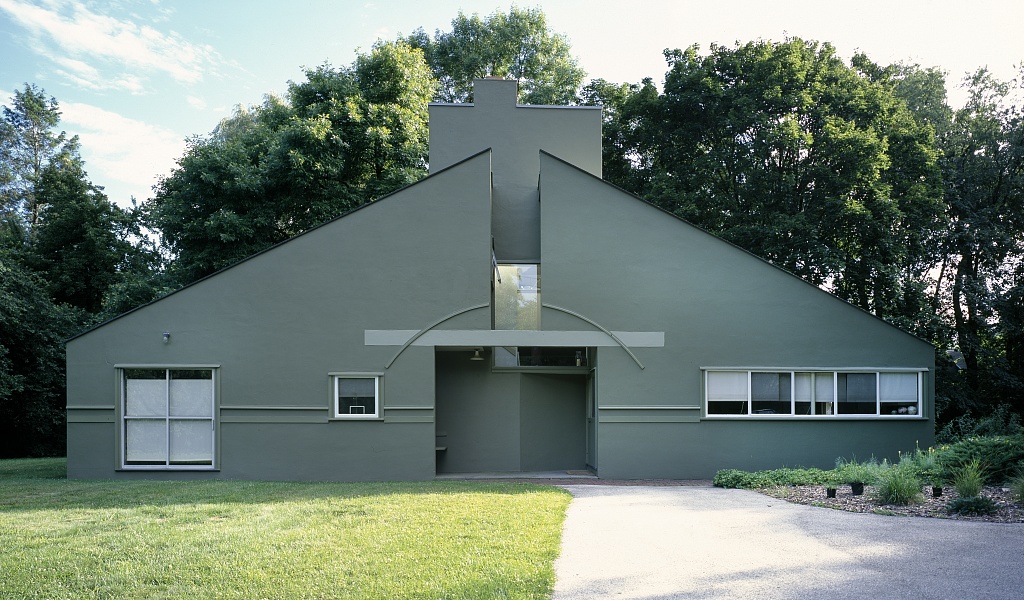
Postmodern structures incorporated new materials like reinforced concrete and industrial steel. But they also utilized traditional materials like brick and stone in unconventional ways. The choice of materials was meant to express the plurality and contradictions seen as inherent to postmodernism. Critics argued postmodern buildings lacked originality, cobbling together past styles. Ornamentation and references were seen as superficial, not structurally integral. As the style spread globally, properly contextualizing so many references also proved challenging. Postmodern architecture design principles include collage-like juxtapositions, expression through unconventional form-making, and contextual references. Contrast and calculated discontinuity are used for symbolic purposes. Contemporary trends drawing from postmodernism include parametric and algorithmic design, digitally-enabled complex geometries, and genericism fusing modern techniques with vernacular forms. Historical pastiche and irony remain, at times digitally mass-customized.
Iconic postmodern buildings include Michael Graves’ Portland Building, Philip Johnson’s AT&T Building, Frank Gehry’s Guggenheim Bilbao, Venturi’s Vanna Venturi House, and James Stirlings Neue Staatsgalerie in Germany. Other noted examples are Arata Isozaki’s Museum of Contemporary Art in Los Angeles and Cesar Pelli’s Petronas Towers. Robert Venturi is the architect most synonymous with postmodern ideals like “less is a bore” and embracing “messy vitality.” Through writings and buildings, Venturi challenged modernist orthodoxy in favor of a richly symbolic, playfully ironic architecture resonating with contemporary society.
11. Rococo architecture
Rococo architecture emerged in early 18th-century France as a continuation of the Baroque style, featuring elaborate ornamentation and asymmetry. Key characteristics include curvilinear forms, intricate decorative motifs depicting nature, pastel colors, and gilded accents. Interiors featured mirrored walls, ceilings painted with frescoes, and ornate gold detailing. Exteriors featured curved walls, quoins, bay windows, and mansard roofs with decorative dormers. The style reflected the wealth and opulence of the French aristocracy prior to the Revolution. Rococo developed as a reaction against the grandeur and symmetry of Baroque, instead emphasizing intimacy, asymmetry, and natural motifs. The excavations at Herculaneum and Pompeii increased interest in antiquity, influencing Rococo’s delicate pastoral scenes. The style also drew from Chinoiserie, with some architectural elements inspired by Chinese art. Rococo emerged first in the decorative arts like furniture and porcelain before translating to architecture.
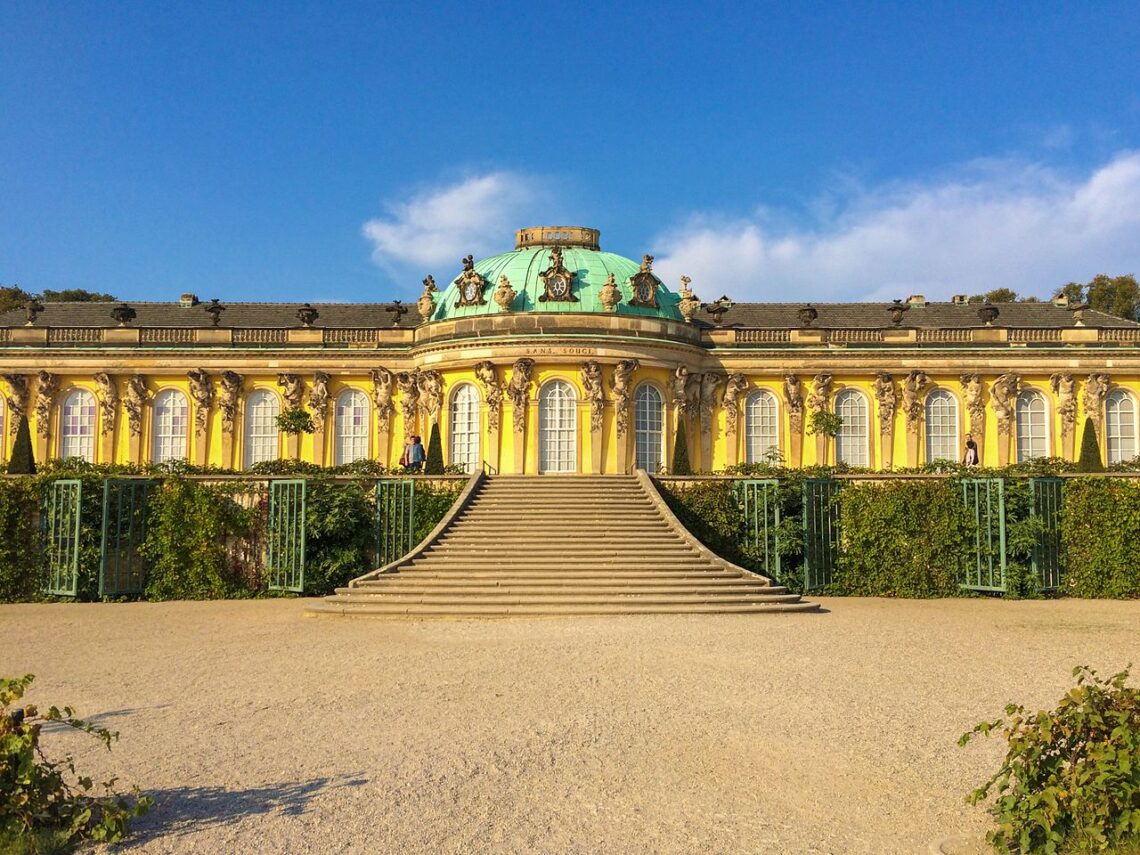
Rococo buildings used stone, brick, and wood, often with stucco exteriors painted in pastels. Intricately carved woodwork featuring gold leaf, mirrors, and frescoes adorned interiors along with decorative plasterwork on ceilings and walls. Marble and exotic woods were used for ornate fireplace mantels. As Rococo spread beyond French aristocracy, critics argued it was overly ornate, frivolous, and lacking substance and moral seriousness. The asymmetry and curvilinear forms were seen as irrational. Key design principles of Rococo include asymmetry, S-curves, C-curves, ornamentation, pastels, gilding, natural motifs, intimacy over grandeur, contrast, and whimsy. Architects should emphasize fluid, curving lines over rigid geometry, intimate decorative spaces over cavernous grand rooms, and hand-crafted details over mass production. Some principles of Rococo provide a rich counterpoint to modern minimalism. The intricate decorative motifs and focus on crafted details could enliven sleek, sterile spaces.
Iconic Rococo buildings include the Amalienburg hunting lodge in Munich, the Catherine Palace near St. Petersburg with its opulent Amber Room, the Petit Trianon at Versailles, the grand staircase of the Würzburg Residence, the Gallery of Mirrors in the Zwinger Palace in Dresden, and churches like Vierzehnheiligen near Bamberg with its ornate interior pilgrimage church. The pioneer of Rococo architecture was Germain Boffrand, who introduced the first interiors with Rococo elements at the Hôtel de Soubise in Paris. Francois de Cuvillies was instrumental in spreading the style to Germany.
12. Byzantine architecture
Byzantine architecture emerged in the Byzantine Empire between the 4th and 15th centuries AD, developing from Roman architecture. Key characteristics include centralized domed spaces, thick walls, pendentives to support domes, elaborate mosaics, and a focus on height and verticality. The style reflects the empire’s Christian orthodox faith with church designs focused on creating transcendent, heavenly spaces.
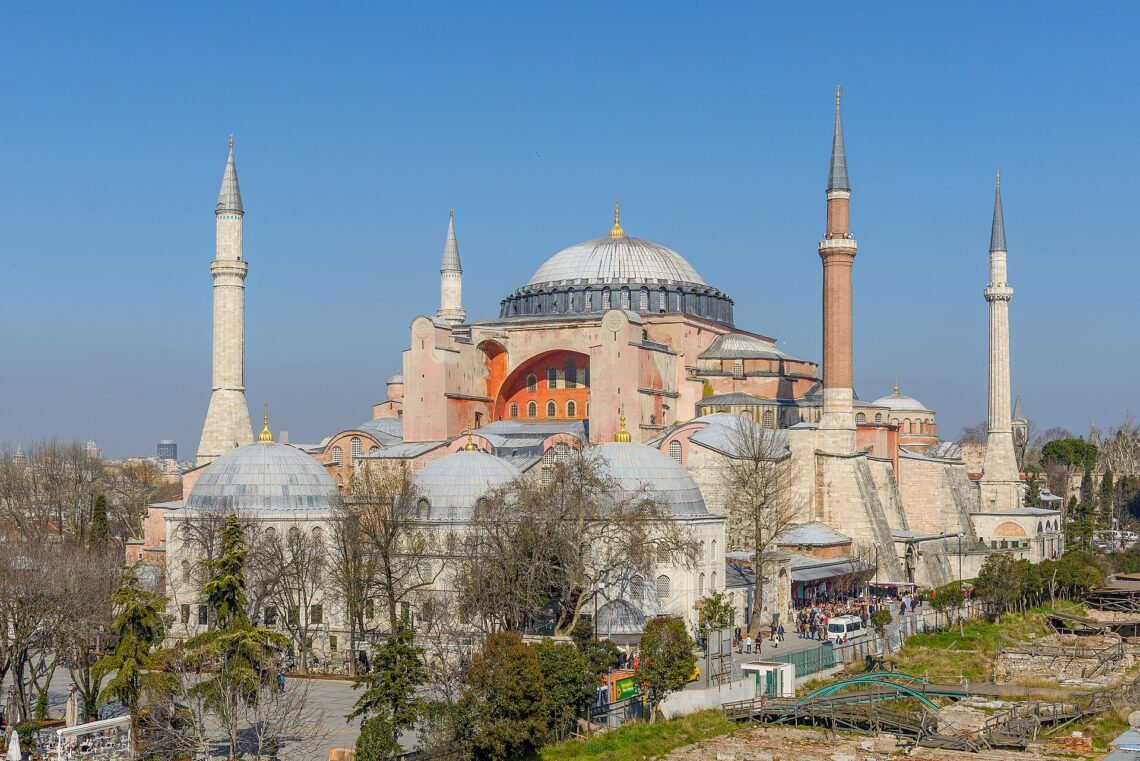
Byzantine architecture was influenced by Roman building techniques using arches, vaults, and domes combined with Eastern influences from Persia and the Near East. The need for large interior spaces for Orthodox Christian worship shaped the emphasis on verticality and grand domes. The iconic Hagia Sophia church established key elements like the dome on pendentives that endured for centuries. Some argue Byzantine architecture lacked innovation, simply reusing Roman techniques. The plain exteriors have been critiqued as unappealing.
Principles like centralized domed spaces, vertical emphasis, and diffused natural light offer inspiration for modern sacred spaces. Intricate decorative surfaces enrich minimalist interiors. Domes and arches add grandeur. Centrally-planned spaces increase flexibility. Iconic Byzantine structures include the Hagia Sophia in Istanbul, the Basilica of San Vitale in Ravenna featuring elaborate mosaics, the Hagia Irene church in Istanbul, and the Chora Church in Istanbul known for its mosaics and frescoes depicting biblical scenes.
13. Organic architecture
Organic architecture is a philosophy pioneered by Frank Lloyd Wright that promotes harmony between human habitation and the natural world. Buildings are designed to integrate with their sites and surroundings using local, natural materials. The goal is to create a symbiotic relationship between the structure and its environment. In contrast, Renaissance architecture originated in 15th-century Florence and was characterized by a revival of Classical Greek and Roman elements. Key features include symmetry, mathematical proportions, order, and harmony, with frequent use of columns, pilasters, pediments, entablatures, arches, and domes. There was an emphasis on human scale and buildings that appeal to emotion and reason.
Frank Lloyd Wright was influenced by his mentor Louis Sullivan’s idea that “form follows function,” which he adapted to “form and function are one.” He looked to nature as the best example of this integration. The excavations at Pompeii and Herculaneum also sparked interest in integrating buildings with their environments. Organic buildings utilize renewable and sustainable materials like wood, bamboo, straw, rammed earth, cob, and limestone. These natural materials have low carbon footprints, durability, and aesthetic appeal.
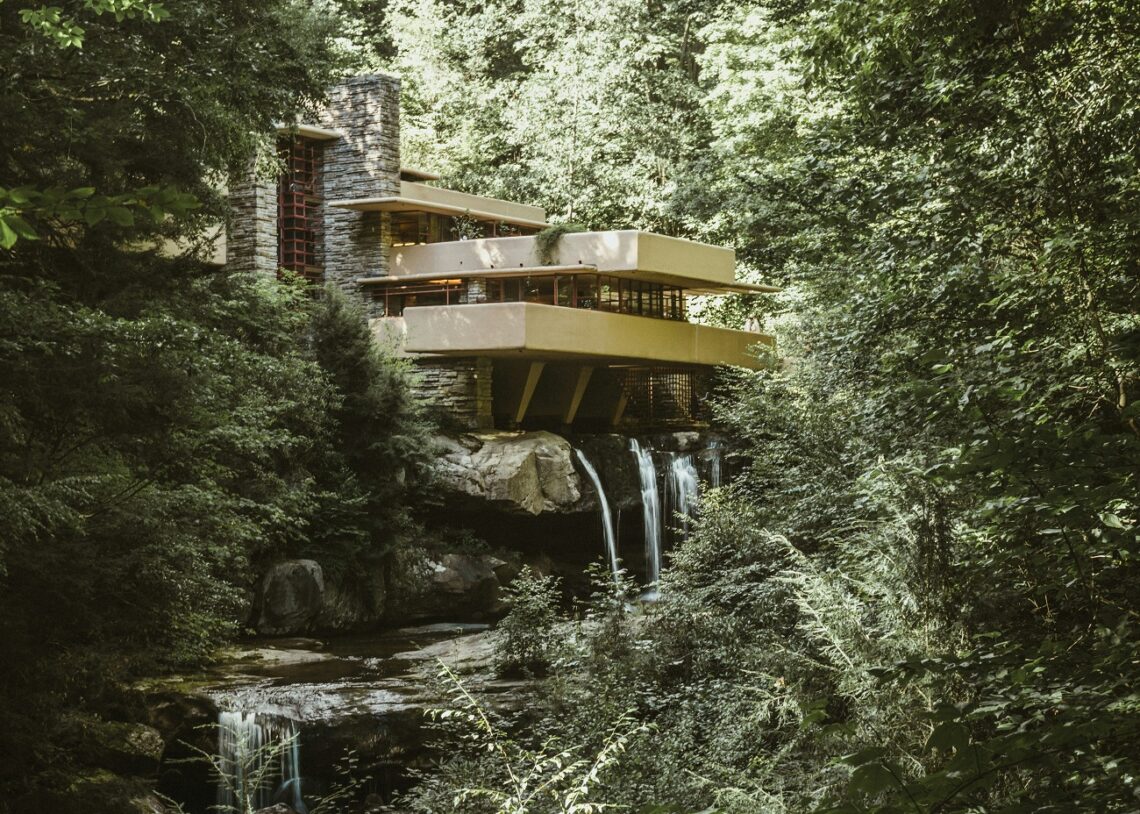
Critics argue the style can prioritize form over functionality and lacks innovation by merely imitating nature. Restrictions on materials and custom work can increase costs. Curving lines and asymmetry depart from classical order and geometry. The rejection of newer materials like steel and concrete limits structural options. Principles include harmony with nature, site-specificity, use of natural materials, passive solar design, connections to nature, clean lines reflecting forms in nature, integration of parts, human scale, and craft-focused details. Principles like centrally planned spaces, diffused natural light, intricate surfaces, and an embrace of curves provide alternatives to minimalism. The focus on locality and crafted details counters global mass production. Whimsical asymmetry injects warmth against stark glass boxes. Biophilic connections to nature enhance well-being.
Notable examples include Frank Lloyd Wright’s Fallingwater, Gaudi’s La Sagrada Familia in Barcelona, Alvar Aalto’s wood-inspired Paimio Sanatorium, the Sydney Opera House’s white shells nestled into land and sea, Antoni Gaudi’s Park Guell integrating architecture and nature, and the organic Sea Ranch community of homes along the California coast. Frank Lloyd Wright originated the philosophy and designed over 1,000 structures guided by principles of organic architecture. Iconic projects like Fallingwater, the Guggenheim Museum, and Taliesin integrate indoor and outdoor spaces, embrace nature’s curves, and use local materials like stone and wood to create groundbreaking organic buildings.
14. Modernist architecture
Modernist architecture emerged in the early 20th century as a reaction against ornate, eclectic styles and an embrace of functionalism and abstraction. It is characterized by simple geometric forms, open interior spaces, large windows, minimal ornamentation, and rejection of historical styles. Modernist architecture was influenced by new advancements in building materials like steel, glass, and reinforced concrete that opened up structural possibilities. It was impacted by the Bauhaus school’s philosophy of form following function.
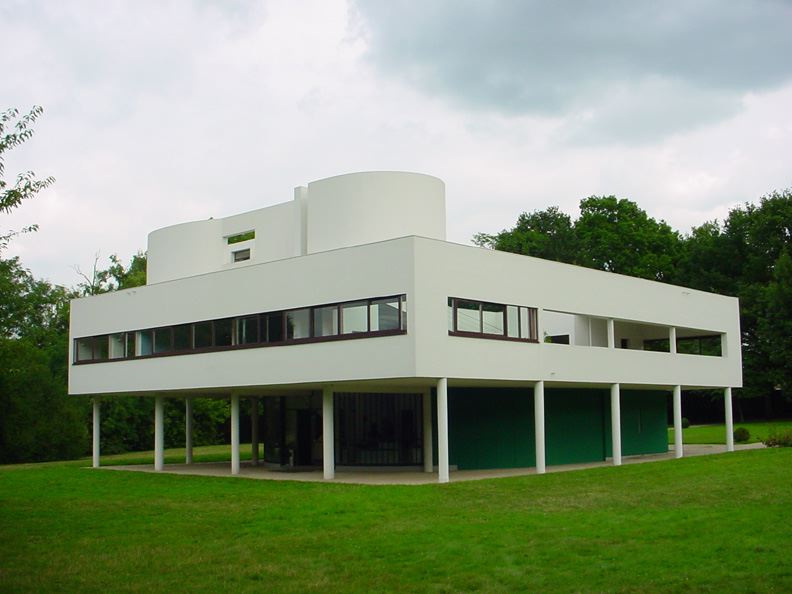
Common materials in modernist buildings include steel, glass, and reinforced concrete. Steel allowed for stronger structures with less visual mass. Glass increased openness and connection to the outdoors. Concrete offered flexibility and sculptural potential. Critics argued modernism was cold, sterile, and soulless. The boxy shapes and lack of ornamentation were seen as ugly. The notion that form follows function was seen as oversimplified. The large scale was considered dehumanizing. Guiding principles include open floor plans, functionalism, flexibility, simplicity, geometric forms, horizontal emphasis, large windows, cantilevered elements, and seamless integration of indoors and outdoors. Architects should focus on the rational use of new materials and expressing their inherent qualities. Principles like open spaces, an abundance of light, and blurring of indoor/outdoors have lasting appeal. Abstract geometric forms and fluid spaces offer alternatives to postmodernism.
Notable examples include Frank Lloyd Wright’s Fallingwater, Le Corbusier’s Villa Savoye, Mies van der Rohe’s Barcelona Pavilion, Oscar Niemeyer’s Brasília, Louis Kahn’s Salk Institute, Frank Gehry’s Guggenheim Bilbao, and Eero Saarinen’s TWA Terminal at JFK Airport. Le Corbusier was highly influential, with his ideas embodied in iconic buildings like Villa Savoye and Unité d’Habitation. He pioneered functionalism and the notion that houses are “machines for living.” His prolific writing advanced modernist theory.
15. International-style architecture
International style architecture emerged in the 1920s and 1930s as a modernist architectural movement that rejected historical styles in favor of a simplified, functionalist approach. Key characteristics of international style include rectilinear forms, open interior spaces, an asymmetrical facade, and avoidance of applied ornamentation. Instead, architectural expression is achieved through the materials and proportions themselves. Steel, concrete, and glass were common materials used in international-style buildings. In contrast, Renaissance architecture revived and adapted classical Greek and Roman architectural elements. Symmetry, proportion, and mathematical ratios were emphasized to reflect the Renaissance spirit of rational humanism. Ornamentation and decorative detailing using classical orders were prevalent.
Several key factors influenced the development of the international style in the early 20th century. Firstly, there was a desire to invent a new modern architectural language appropriate for the machine age, rejecting historical revivalism. Secondly, new materials such as steel, glass, and reinforced concrete enabled new construction techniques and aesthetic possibilities. Thirdly, many proponents of the international style like Walter Gropius, Le Corbusier, and Mies van der Rohe were associated with the Bauhaus, which promoted functionalist design and mass production.
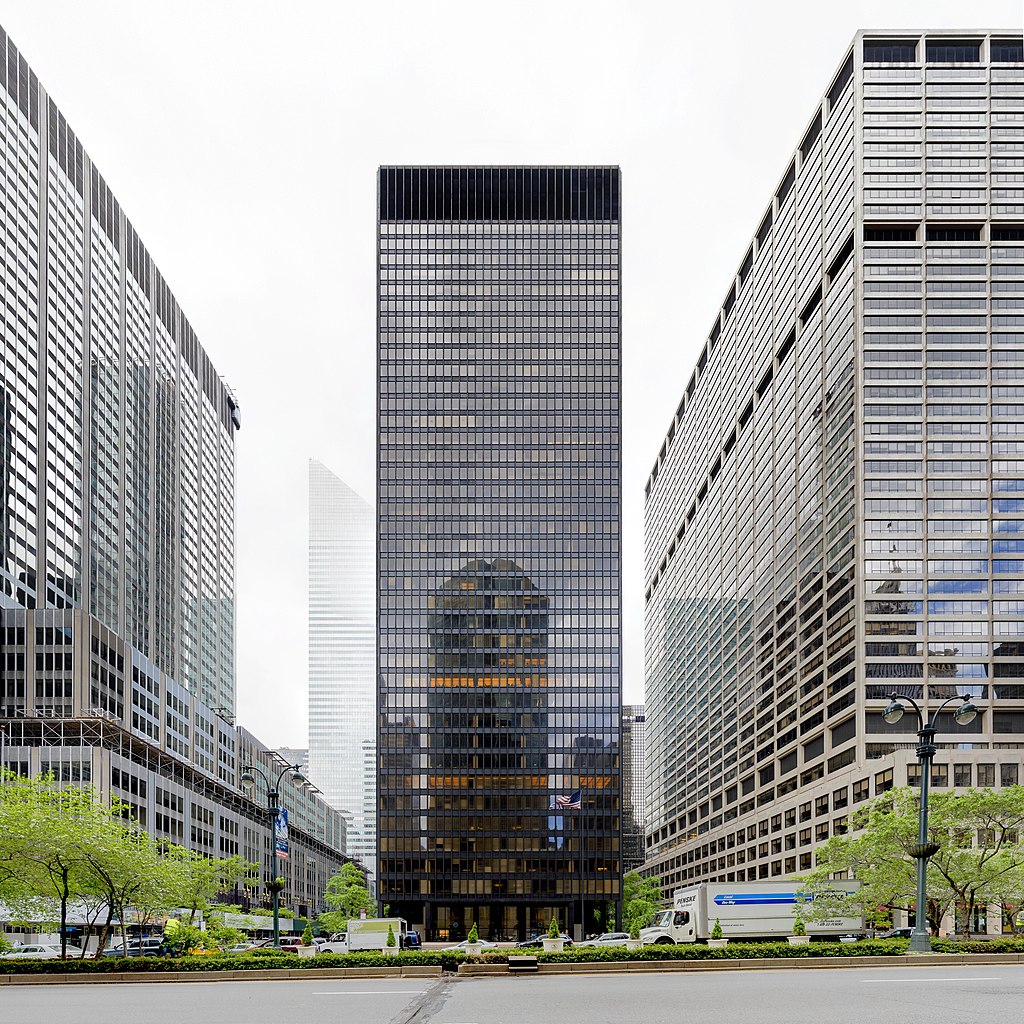
The most iconic materials of the international style are steel, glass, and reinforced concrete. Steel frame structures allowed for more open, flexible floor plans compared to load-bearing masonry walls. Steel could also be mass-produced. Glass was used extensively for non-load-bearing exterior walls, allowing more natural light and a visual connection between interior and exterior. Several criticisms emerged regarding the international style. Firstly, the boxy, glass-and-steel aesthetic became ubiquitous, leading many to consider it monotonous and sterile. The lack of regional influences and context was also critiqued. Secondly, large housing projects inspired by the international style, like the failed Pruitt-Igoe development, were accused of being dehumanizing. Thirdly, later postmodern architects saw the dogmatic avoidance of ornament, color, and reference to history or context as overly restrictive. Finally, the international style’s perceived elitism, technocratic tendencies, and association with corporate power led to a backlash. Many felt its designs disregarded public taste and failed to provide a sense of human scale and place.
Influential international-style buildings around the world include Villa Savoye by Le Corbusier in Poissy, France, an early modernist white villa epitomizing Corbusian principles. The Barcelona Pavilion by Mies van der Rohe in Barcelona, Spain, is an emblematic steel and glass structure with abstract geometric forms. The Bauhaus Building by Walter Gropius in Dessau, Germany, is a groundbreaking school of design exhibiting modernist aesthetics. The Lovell House by Richard Neutra in Los Angeles, USA, is an iconic early modernist steel and glass residence. The Seagram Building by Mies van der Rohe in New York City, USA, is a landmark glass office tower set back from the street on a plaza.
The architect most representative of the international style was Ludwig Mies van der Rohe. Major projects include the Lake Shore Drive Apartments in Chicago which exemplified his famous saying “less is more” with an austere glass and steel facade. The Seagram Building in New York set the standard for the post-war corporate office tower, with its structural expression, plaza, and bronze I-beams. The Farnsworth House created an ideal glass box for modern living.
16. Futurist architecture
Futurist architecture emerged in the early 20th century as part of the Futurism movement in Italy. It rejected historical revivalism and instead celebrated themes of speed, motion, machinery, and modernity. Characteristics include dynamic lines, unusual angles, asymmetry, and modern materials like concrete, glass, and steel. Futurist architecture aimed to capture the energy and dynamism of the machine age. Several factors influenced the development of futurist architecture in early 20th-century Italy. Firstly, there was a desire to invent a new, modern architectural language appropriate for the machine age, rejecting historical revivalism. Secondly, new materials like steel, glass, and concrete enabled innovative construction techniques and aesthetic possibilities. Thirdly, the Futurism art movement, founded by Filippo Tommaso Marinetti, glorified themes like speed, technology, and dynamism which futurist architects sought to capture.
Futurist architecture utilized industrial materials that were new at the time, including concrete, glass, and steel. Reinforced concrete allowed for sculptural forms, overhangs, and thin shell roofs. Concrete was also fireproof and inexpensive, suiting the need for affordable construction. Steel framing enabled open, flexible floor plans compared to load-bearing masonry walls. Steel was also strong, lightweight, and could be mass-produced. Glass was used for non-load-bearing exterior walls to allow more natural light and a visual connection between interior and exterior. Glass curtain walls exemplified the modernist aesthetic.
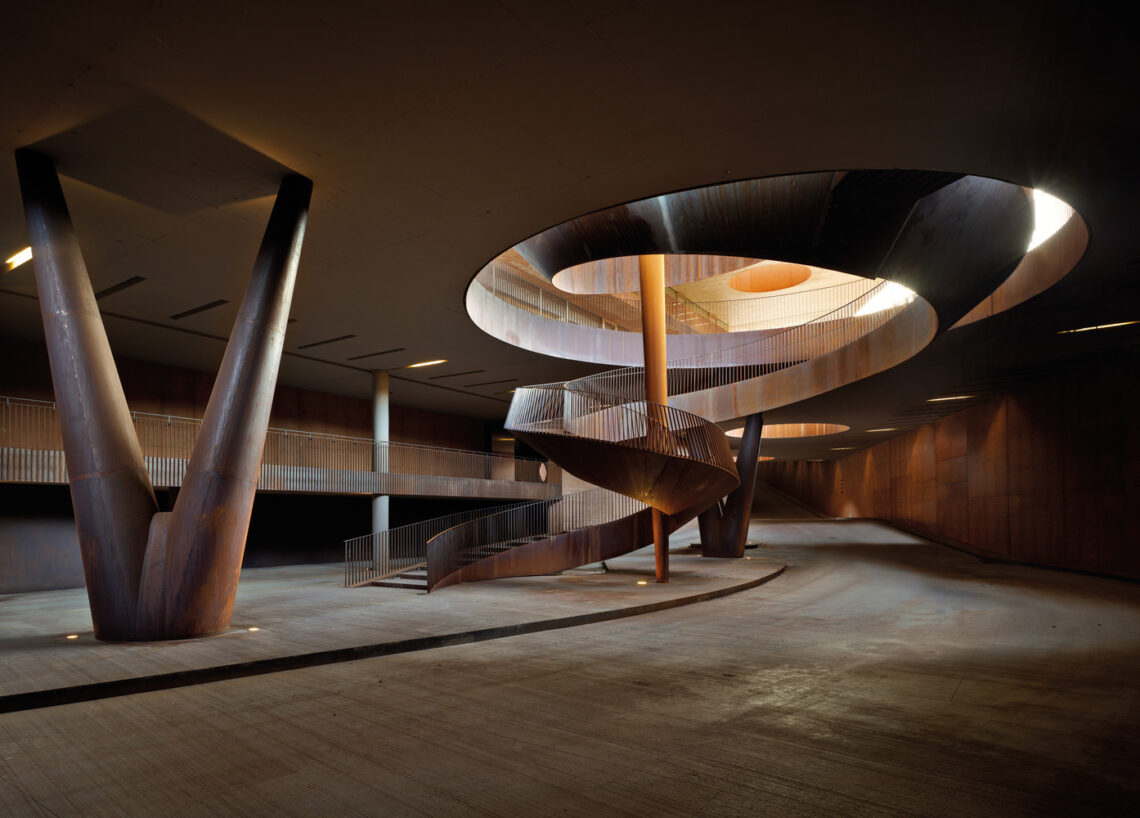
Several criticisms emerged regarding futurist architecture. Firstly, its dogmatic rejection of history, ornament, and context was seen as overly restrictive by later postmodern architects. Secondly, its utopian social goals largely went unrealized. Thirdly, the sleek, boxy, glass-and-steel aesthetic became nearly ubiquitous, leading many to consider it monotonous and dehumanizing when applied to large housing projects. Fourthly, prominent examples like Le Corbusier’s plans for Chandigarh were accused of being elitist, technocratic impositions of Western modernism.
Key design principles of futurist architecture include dynamic lines and forms suggesting speed and motion; unusual, asymmetrical shapes and angles contrasting traditional architecture; cantilevers, pilotis, and thin shell concrete roofs enabled by new materials; open, flexible floor plans using steel framing and non-load-bearing walls; integration with nature through gardens, parks, and natural light; elevating everyday buildings through visually practical structures. The architect most representative of futurist architecture is Antonio Sant’Elia. Though he built little, his conceptual drawings for La Città Nuova envisioned a futuristic city of massive, mechanized buildings and soaring elevated streets. His designs featured bold geometric forms, extensive use of concrete and glass, and a machine aesthetic. Sant’Elia’s work aligned with the Italian Futurism movement founded by Filippo Tommaso Marinetti.
17. Beaux-arts architecture
Beaux-Arts architecture emerged in the late 19th century as a grand, ornate style taught at the École des Beaux-Arts in Paris. It combined neoclassical forms like columns, arches, and domes with more elaborate Baroque and Rococo styling. Characteristics include formal symmetry; rusticated stone at the raised first story; elaborate ornamentation like swags, statues, and shields; and a hierarchy of finely decorated spaces. Beaux-Arts buildings aimed to evoke power and civic pride. The École des Beaux-Arts, established in Paris in the 17th century, profoundly shaped Beaux-Arts architecture. Students studied classical forms and design principles while developing elaborate drawing and modeling skills. Architects who attended like Richard Morris Hunt brought Beaux-Arts ideals back to America. Its grandeur suitably expressed late 19th-century prosperity and nationalism. The influential 1893 Chicago World’s Fair, designed in the Beaux-Arts manner, increased its visibility.
Masonry-bearing wall construction with materials like stone, marble, limestone, and brick was common in Beaux-Arts buildings. Masonry gave an impression of solidity, permanence, and luxury suiting monumental civic structures. Stone exteriors provided a canvas for elaborate carvings, statuary, columns, and rusticated bases. Marble, known for fine detailing, adorned lavish bank lobbies and museum interiors. Terracotta is cheaper than stone but able to achieve crisp details, and decorated facades. Metals like wrought iron, bronze, and gilt were used for railings, doors, chandeliers, and trim.

Several criticisms emerged regarding Beaux-Arts architecture. Firstly, its monumental scale and high cost made it impractical for ordinary projects. Secondly, proponents of newer styles saw the dogmatic focus on symmetry and classical forms as restrictive. Thirdly, the lavish ornamentation came to be viewed as gaudy and overwrought by modernists, who favored simplicity. Lastly, Beaux-Arts tendencies toward monumental city planning projects were accused of being grandiose and ignoring public input. Contemporary trends inspired by Beaux-Arts architecture include revivals of elaborate ornamentation and mixed historical references, using computer-aided design for complex classical stonework details, and integrating multiple architectural firms and artists for richly symbolic civic projects.
Highly influential Beaux-Arts buildings include The Paris Opéra designed by Charles Garnier, an ornate opera house mixing styles; the Metropolitan Museum of Art in New York by Richard Morris Hunt, a monumental masonry museum; the Boston Public Library by McKim, Mead and White, a grand library with open reading room; the Vienna State Opera by August Siccardsburg and Eduard van der Nüll, a lavish opera house with opulent interiors; the Royal Museum for Central Africa in Tervuren. The architect most representative of Beaux-Arts architecture was Charles Follen McKim of the prominent American firm McKim, Mead and White. McKim studied at the École des Beaux-Arts and adopted many of its ideals including monumentality, classical forms, and rich decoration. Major Beaux-Arts projects by McKim, Mead, and White include the Morgan Library, the Boston Public Library, and New York’s Pennsylvania Station which demonstrated McKim’s flair for dramatic spaces, elaborate stonework, and integration of engineering, art, and architecture.
18. Colonial architecture
Colonial architecture refers to the building styles that emerged in the colonies of European powers from the 15th to 20th centuries. It combines architectural features brought by colonists from their home countries with local materials and techniques. Characteristics include colonnades, arches, verandahs, and adaptations for tropical climates. Several factors shaped colonial architecture. Firstly, colonists built with available local materials like wood, brick, and stone which differed from their home countries. Secondly, buildings evolved adaptations to tropical climates like verandahs and louvered windows. Thirdly, colonists incorporated indigenous techniques like taipa construction in Goa. Finally, the need for functional buildings suitable for trade and plantation economies influenced form. Though colonialism declined, its architectural legacy remains prominent in former colonies.
Colonial buildings used local wood, stone, and brick due to availability. Wood-framed buildings prevailed in timber-rich colonies. Heavy masonry suited civic structures in urban centers. Thatched roofs were common in tropical regions. Vernacular techniques like coursed rubble masonry appeared in churches and plantation houses. Stucco and later concrete were used in Spanish colonies. Metals were limited to nails and decorative elements. Criticisms of colonial architecture include its association with the subjugation and exploitation of colonized peoples. The imposition of European styles with little regard for local cultures is also lamented. Its grand civic buildings and mansions represented excessive privilege and inequality. Some critics say it lacked originality, merely mimicking European trends.
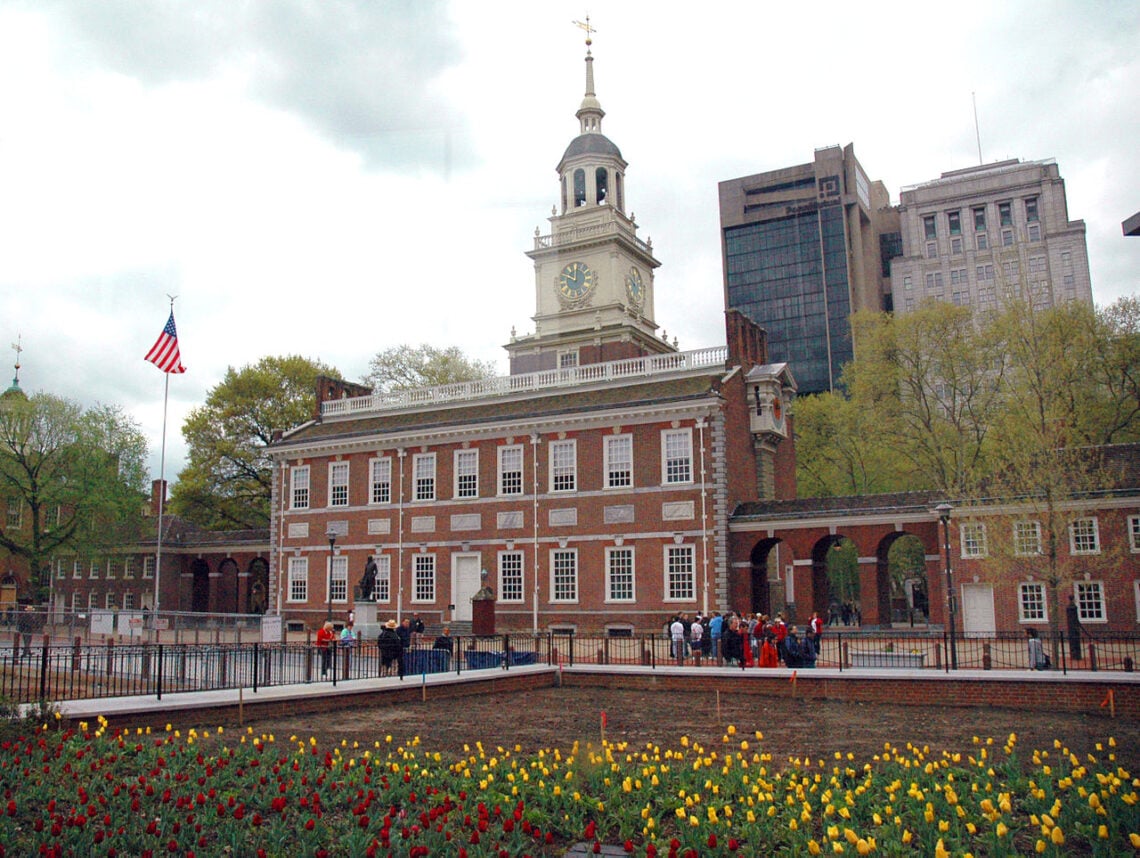
Contemporary trends inspired by colonial architecture include appreciating hybrid styles and cultural mixing in buildings; incorporating verandahs, shutters, and other climate-appropriate elements; reviving pastel colors and adapted details in Caribbean architecture; valuing urban walkability and human scale over monumentalism; respectfully adaptive reuse of historic colonial structures.
Notable colonial architecture includes the Portuguese Church of St. Francis in Goa, India with a European facade and Indian interior, Dutch townhouses of New Amsterdam (New York) made of brick with distinctive gables, Spanish missions in California with stucco walls and terracotta roofs and French Quarter houses in New Orleans known for wrought-iron balconies and shutters. Andrea Palladio was highly influential in spreading European classical styles globally through colonial architecture. His principles like symmetry and proportions were adapted to villas and civic buildings in British, Dutch, and Spanish colonies, creating regional Palladian offshoots. Through the ubiquity of Palladianism, Andrea Palladio indelibly shaped the architecture of European colonization more than any other single architect.
19. Deconstructivist architecture
Deconstructivist style architecture is a postmodern architectural movement that emerged in the 1980s, characterized by fragmentation, distortion of forms, and an absence of obvious harmony, continuity, or symmetry. Key principles of deconstructivist design include fragmentation and distortion of forms, asymmetry, and disunity, angled geometries and tilted planes, cantilevers, diagonals, and inclined forms, distorted surfaces and facades, contrasts and juxtapositions of shapes and forms, an appearance of tension or instability, absence of ornamentation, and revealing the structure and construction. The principle behind deconstructivism was to “invent the impossible”, breaking with the structural norms of classic buildings and moving away from elementary architectural principles.
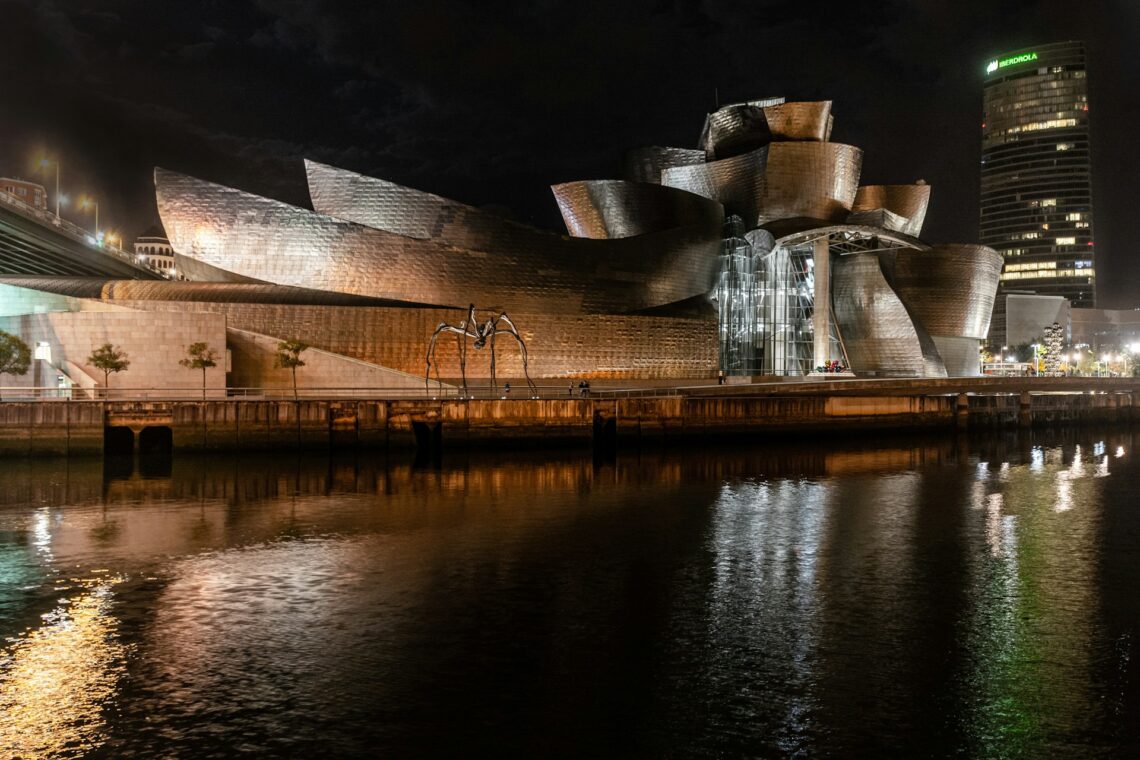
Contemporary trends inspired by deconstructivism that architects can utilize include irregular, fragmented shapes enabled by digital design, cantilevers and tilted forms through engineering innovations, contrasting materials like metal panels and glass, revealing environmentally sustainable building systems, adaptive reuse of older buildings with deconstructivist additions, sculptural, expressive forms rather than minimalist boxes, unconventional angles, and planes challenging orthodoxy, dynamic aesthetics valuing tension over harmony, and digitally-designed forms considered unbuildable before.
Iconic examples of deconstructivist style architecture around the world include the Wexner Center for the Arts by Peter Eisenman in Columbus, Ohio, the Guggenheim Museum Bilbao by Frank Gehry in Bilbao, Spain, the Jewish Museum Berlin by Daniel Libeskind in Berlin, Germany, the MAXXI National Museum by Zaha Hadid in Rome, Italy, the Walt Disney Concert Hall by Frank Gehry in Los Angeles, USA, the Vitra Fire Station by Zaha Hadid in Weil am Rhein, Germany, the Dancing House by Frank Gehry in Prague, Czech Republic, and the Contemporary Jewish Museum by Daniel Libeskind in San Francisco, USA.
What are the top architectural styles throughout history?
- Gothic architecture: Gothic architecture emerged as a top architectural style in 12th century France, pioneered by Abbot Suger at the Basilica of Saint-Denis. It is characterized by pointed arches, ribbed stone vaults, flying buttresses, and an emphasis on height and light. Gothic cathedrals featured soaring naves and intricate stained glass windows that filled the interior with colorful, ethereal light. Common in religious buildings across Western Europe, the Gothic style also appeared in universities, civic structures, castles, and aristocratic residences. It fell out of favor in the 16th century with the emergence of Renaissance classicism but experienced a 19th-century revival.
- Renaissance architecture: Renaissance architecture is one of the top architectural styles that revived classical Roman forms, emphasizing harmonic proportions, order, and symmetry. Filippo Brunelleschi studied Roman ruins and integrated elements like columns, arches, and domes into new Italian churches and civic buildings. Renaissance architects followed classical architectural theory, seeking structures that balanced form and function. They pioneered linear perspective in building designs and embellished surfaces with classical motifs.
- Baroque architecture: Baroque architecture embraced dramatic shapes, rich colors, and ornamentation. It evoked grandeur through illusionary effects, contrast, and movement. Curving forms, decoration, and marble patterns enlivened church interiors. The top architecture styles have spread from Italy to France, Austria, southern Germany, and Russia, Baroque architecture was employed in palaces, churches, and public buildings until the mid-18th century.
- Neoclassical architecture: The Neoclassical style is considered a s top architecture in mid-18th century Europe as a reaction against the ornate Baroque and Rococo. Neoclassicism valued simplicity, symmetry, and mathematical proportions reminiscent of classical Greek temples and Roman civic buildings. Clean lines, restrained decorative elements like columns and pediments, and references to antiquity characterized the new style. Interiors featured elegant parquet floors, plasterwork ceilings, and classically-inspired furniture. Large windows provided views of surrounding landscapes.
- Victorian architecture: Victorian architecture is one of the top architectural styles that is increasingly varied and eclectic, ranging from Neoclassical to Gothic Revival to Arts and Crafts styles. Architects freely adapted earlier styles while embracing new materials like iron and glass. Victorian Gothic buildings featured steep roofs, pointed arches, towers, and tracery windows. Neoclassical civic structures emphasized grandeur through columns, domes, and porticos. By mid-century, rail stations, factories, and commercial buildings displayed structural iron and glass.
What architectural styles were mostly used by architects in the 20th century?
Modernism is mostly used style by architects in the early 20th century. Key modernist styles included Art Deco, which featured sleek geometrical forms, the stripped-down functionalist style promoted by the Bauhaus school, and the International Style exemplified by the work of Le Corbusier, Walter Gropius, and Ludwig Mies van der Rohe. Mid-century modernism adapted modernist principles to suburban single-family homes. Postmodernism arose in the late 20th century in reaction to the bare-bones functionalism of high modernism, reintroducing historical references and elements of symbolism and ornamentation. Other notable 20th-century styles include Expressionism with its emotional and sculptural forms. In early modernism, it was focused on formal and functional purity, styles proliferated over the course of the century as architects responded to changing technological possibilities, cultural contexts, and philosophical paradigms.
What architectural styles are mostly used by architects in the 21st century?
Architects mostly used architectural style in the 21st century contemporary architecture. It features clean lines, open spaces, and an emphasis on natural light, deconstructivist architecture, characterized by fragmented forms, asymmetry, and unconventional angles; and sustainable architecture, which focuses on energy efficiency, eco-friendly materials, and minimizing environmental impact. Advancements also influence architects in the 21st century in computer-aided design (CAD) technology, which allows for more precise and complex designs. This has led to the creation of innovative structures that push the boundaries of traditional architecture. Additionally, there is a growing appreciation for hybrid styles that combine elements from different architectural movements, as well as a focus on the adaptive reuse of historic structures. Iconic examples of 21st-century architecture include the Guggenheim Museum Bilbao by Frank Gehry, the Jewish Museum Berlin by Daniel Libeskind, and the MAXXI National Museum by Zaha Hadid. These buildings showcase the diverse range of styles and materials used by architects today, as well as their commitment to pushing the boundaries of architectural design.
What classical architectural orders were developed in ancient Greece and Rome and what are their distinguishing characteristics?
The ancient Greeks developed three major classical architectural orders – Doric, Ionic, and Corinthian. Firstly, the Doric order is the oldest and simplest, characterized by thick columns with no base, a plain capital, and relatively simple details. Doric columns have 20 sides or facets, were found on temples dedicated to gods and goddesses, and convey a sense of strength and masculinity. The Parthenon is a famous example of architecture using the Doric order. Secondly, the Ionic order emerged next in Greece, with thinner columns featuring scroll-shaped capitals and ornamental bases. Ionic columns only have 16-18 sides, were used on a variety of buildings, and conveyed more gracefulness and elegance compared to the Doric order. Ionic capitals and other details such as carved moldings also feature more complex and refined ornamentation. The Erechtheion on the Acropolis with its Caryatid Porch is a prime example of Ionic order architecture. Lastly, the Corinthian that considered the most slender and ornate. Hallmarks include intricate capitals decorated with stylized acanthus leaves and scrolls, columns with fluted shafts, and an overall emphasis on elaborate ornamentation and refinement. Corinthian columns could be used to convey wealth, majesty, and sophistication. Later, during the ascendency of Rome as a world power, a fourth order emerged called the Composite. As the name suggests, the Composite order combines elements of the Ionic and Corinthian orders. The Composite order is sometimes known as the Roman order for its frequent use in imperial Roman architecture.
What main features characterize Renaissance architecture stemming from 15th/16th century Italy?
Renaissance architecture is marked by a conscious revival of classical Greek and Roman forms, details, and ornamentation. Buildings had survived in Rome and Italy, allowing artists, architects, scholars, and patrons to directly reference them. Renaissance structures exhibit symmetry, proportion, geometry, and a general emphasis on harmonic and mathematical relationships, reminiscent of those considered ideal in ancient buildings. Columns began featuring classical orders like Doric, Ionic, Corinthian, and Composite rather than medieval types. Ornate classical entablatures, pediments, friezes, pilasters, and other elements started reappearing. Renaissance architects were interested in ancient principles of design and engineering. Buildings were often planned to have clarity, unity, and ideal geometric shapes. Most prominent structures such as churches, palaces, and town halls were designed following classical ideas of balance and mathematical harmony indoors and in their external appearance.
What early 20th-century architectural style is by large glass curtain walls, open interior plans, and floating corner windows?
The International style is characterized by architecture of large glass curtain walls, open interior plans, and floating corner windows. It embraced modern industrial materials like steel, concrete, and large sheets of glass now reliably produced due to technological advances. Buildings took on plain, sleek forms showcasing these engineering innovations. A defining element was the glass curtain wall enveloping the exteriors. This exterior glass skin conveyed lightness, illumination, and a progressive modern spirit departing from heavier masonry and small window openings requiring explicit structure. Vast curtain glazing also provided transparency and abolished barriers between the interior and the outside. Complementing glass walls, interiors gained more open, flexible plans over closed cellular rooms via minimal internal supports. The International Style came to dominate commercial high-rise construction worldwide for decades. Its glass-steel-stone aesthetic still resonates, conveying modernity through lucid forms, open plans, and expansive curtain walls in architecture into the 20th century.
What influential 20th-century architectural movement used the concept “Form follows function,” stressing logic and elimination of ornament?
The architectural movement that used the concept “form follows function,” emphasizing logic and the elimination of ornament, was Modernism. This movement was highly influential in the 20th century and focused on the idea that the form of a building or object should primarily relate to its intended function or purpose. Architects of this movement, including visionaries like Le Corbusier, Ludwig Mies van der Rohe, and Walter Gropius, believed that design should be dictated by the purpose a structure serves. This philosophy led to the development of clean lines, geometric shapes, and a focus on efficiency and practicality. Simplicity and minimalism were key hallmarks of Modernist architecture. Ornamental details were discarded in favor of straightforward design elements, showcasing a commitment to functional aesthetics. The movement embraced technological advancements, introducing new materials like steel, glass, and concrete. Architects explored the expressive possibilities of these materials, contributing to the innovative and often avant-garde designs associated with Modernism. Open floor plans became a prominent feature of Modernist buildings, promoting fluid and interconnected spaces. The intention was to create environments that were not only efficient but also adaptable to evolving needs. In addition, Modernist architects sought to integrate their designs with nature, incorporating large windows and emphasizing natural light to blur the boundaries between indoor and outdoor spaces.
What types of large decorative curves, windows, and mansard roofs are key features of the Second Empire French architectural style?
The most iconic feature of Second Empire buildings is the mansard roof. Named after 17th-century French architect Francois Mansart, mansard roofs are double-pitched hip roofs with a steep lower slope that allows for a full upper attic story with dormer windows. This roof form creates extra living space and gives Second Empire buildings their distinctive profile. In addition to the mansard roofline, Second Empire structures feature elaborate exterior ornamentation. Decorative brackets, dormers with ornamental hood moldings, iron roof cresting, balustrades, bay windows, and quoins are common. The effect is one of grandeur and opulence. Facades tend to have a symmetrical layout with neoclassical details like columns, pediments, and rusticated stone bases inspired by Baroque and Renaissance architecture. This lends a sense of formality. Masonry construction with materials like stone, brick, and metals such as iron, bronze, and tin convey permanence and luxury. Second Empire buildings often have an elevated first story, separated by a colonnade or low arcade from the upper floors. Interiors continue the elaborate detailing with ornate moldings, parquet floors, frescoed ceilings, and marble fireplaces. The style aimed to impress with its majestic presence and modernity. In the United States, the Second Empire was fashionable for mansions, civic buildings, row houses, and even cottages from around 1855 to 1885, especially in the Northeast and Midwest.
What recent style uses parasitic add-on structures, unconventional distorted shapes, and complex layered forms?
The recent architectural style that utilizes parasitic add-on structures, unconventional distorted shapes, and complex layered forms is Deconstructivism. Deconstructivist architecture embraces irregular, fragmented geometry disrupting conventional unified forms and grids. Its complex visual compositions marked a departure from postwar modernism’s devotion to sleek rectilinear volumes and stripped-down functional clarity. Instead, Deconstructivist buildings seem in disarray, with overhanging elements that appear on the verge of collapse. Architects compose chaotic interplays of obliquely angled forms, jagged edges, tilted walls, and oddly intersecting planes. Traditional architectural elements like columns, beams, walls, and roofs are broken apart, distorted, and recombined in new experimental ways. Structures feel fragmented and dissected, with small parasitic units grafted onto their surface in contrasting angles and textures.
Explore Architecture Styles
Find below our top guides about Architecture Styles.








